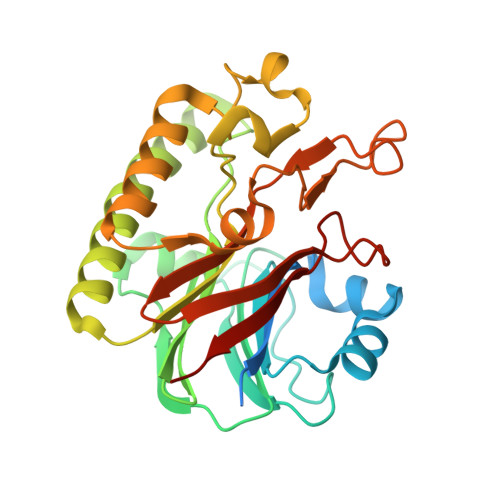Structural and Functional Characterization of a Unique AP Endonuclease From Deinococcus radiodurans .
He, Y., Wang, Y., Qin, C., Xu, Y., Cheng, K., Xu, H., Tian, B., Zhao, Y., Wang, L., Hua, Y.(2020) Front Microbiol 11: 1178-1178
- PubMed: 33117296
- DOI: https://doi.org/10.3389/fmicb.2020.01178
- Primary Citation of Related Structures:
6LPM - PubMed Abstract:
Various endogenous and exogenous agents cause DNA damage, including apurinic/apyrimidinic (AP) sites. Due to their cytotoxic effects, AP sites are usually cleaved by AP endonuclease through the base excision repair (BER) pathway. Deinococcus radiodurans , an extraordinary radiation-resistant bacterium, is known as an ideal model organism for elucidating DNA repair processes. Here, we have investigated a unique AP endonuclease (DrXth) from D. radiodurans and found that it possesses AP endonuclease, 3'-phosphodiesterase, 3'-phosphatase, and 3'-5' exonuclease but has no nucleotide incision repair (NIR) activity. We also found that Mg 2+ and Mn 2+ were the preferred divalent metals for endonuclease and exonuclease activities, respectively. In addition, DrXth were crystallized and the crystals diffracted to 1.5 Å. Structural and biochemical analyses demonstrated that residue Gly198 is the key residue involved in the substrate DNA binding and cleavage. Deletion of the drxth gene in D. radiodurans caused elevated sensitivity to DNA damage agents and increased spontaneous mutation frequency. Overall, our results indicate that DrXth is an important AP endonuclease involved in BER pathway and functions in conjunction with other DNA repair enzymes to maintain the genome stability.
Organizational Affiliation:
MOE Key Laboratory of Biosystems Homeostasis and Protection, College of Life Sciences, Institute of Biophysics, Zhejiang University, Hangzhou, China.














